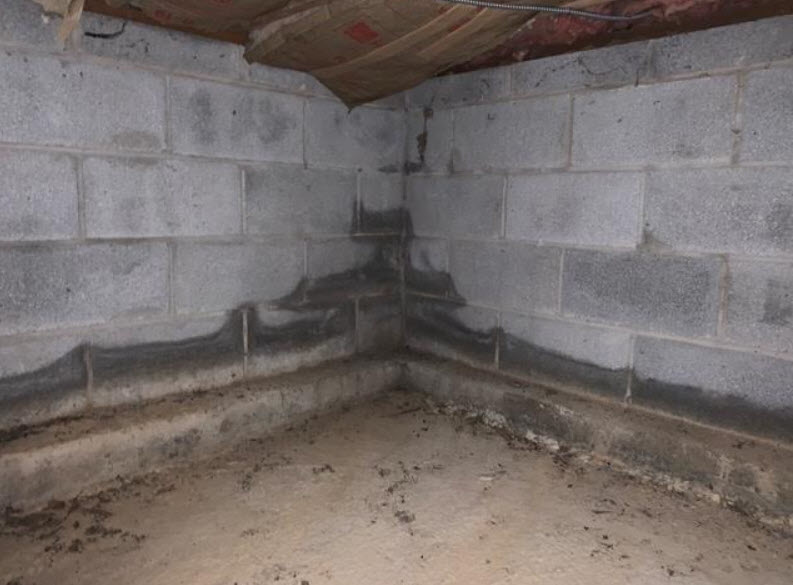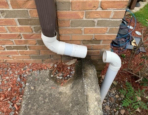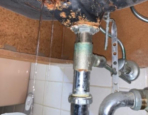This image shows moisture intrusion in a crawl space, indicated by dark water stains along the concrete block walls. This is a serious concern for the homeowner because excess moisture in a crawl space can lead to a variety of structural and health-related issues.
Why This Is a Problem:
- Foundation Damage – Persistent moisture can weaken the concrete, leading to cracks, settlement issues, and costly repairs.
- Mold & Mildew Growth – Damp environments create the perfect breeding ground for mold and mildew, which can spread to other areas of the home and negatively impact indoor air quality.
- Pest Infestations – Moisture attracts termites, rodents, and other pests that can cause structural damage and create unsanitary conditions.
- Wood Rot & Structural Weakness – If moisture reaches wooden joists or subflooring, it can lead to rot, weakening the home’s foundation and flooring.
- Increased Humidity Indoors – Excess moisture in the crawl space can rise into the home, making it feel damp, uncomfortable, and harder to heat or cool efficiently.
- Higher Energy Bills – A damp crawl space can reduce insulation effectiveness, forcing HVAC systems to work harder and increasing energy costs.
- Potential Flooding Risks – If not properly addressed, the water intrusion could worsen, leading to standing water and costly water damage.
What Should Be Done?
Homeowners should take immediate action by:
✅ Installing a proper drainage system (e.g., sump pump, French drain)
✅ Sealing cracks or openings where water is entering
✅ Adding crawl space encapsulation or a vapor barrier to prevent moisture buildup
✅ Improving ventilation and installing a dehumidifier to reduce humidity
Ignoring these issues can lead to serious structural and health problems, so professional waterproofing and foundation repair should be considered as soon as possible.



